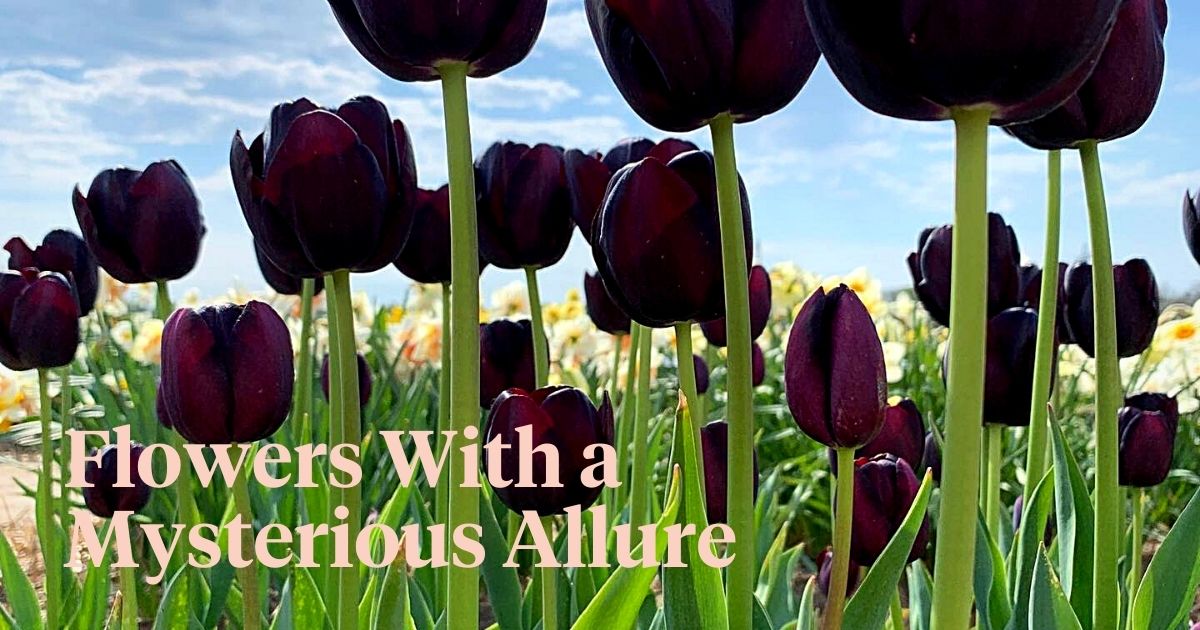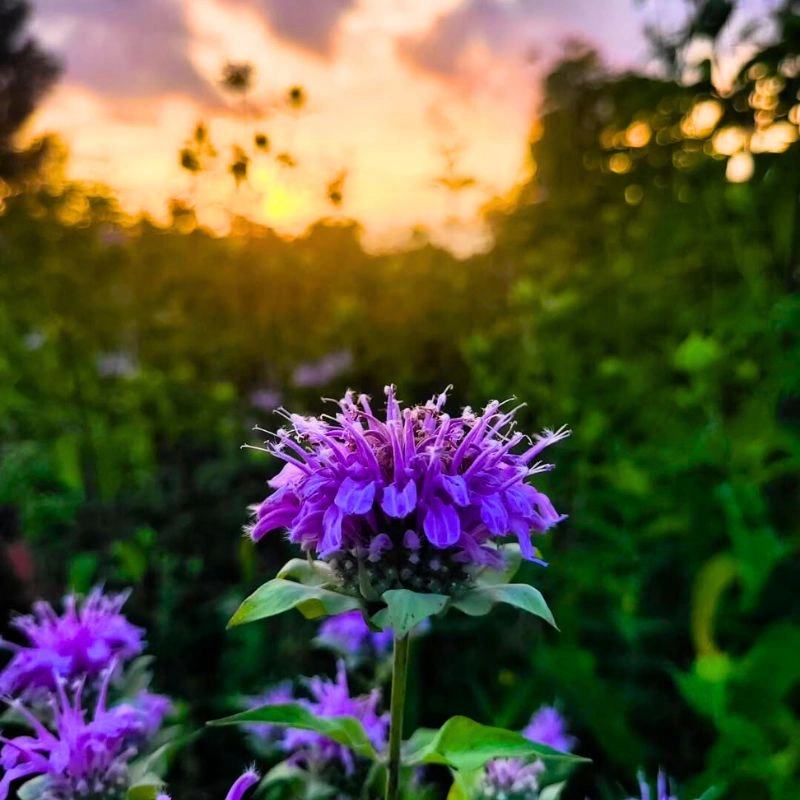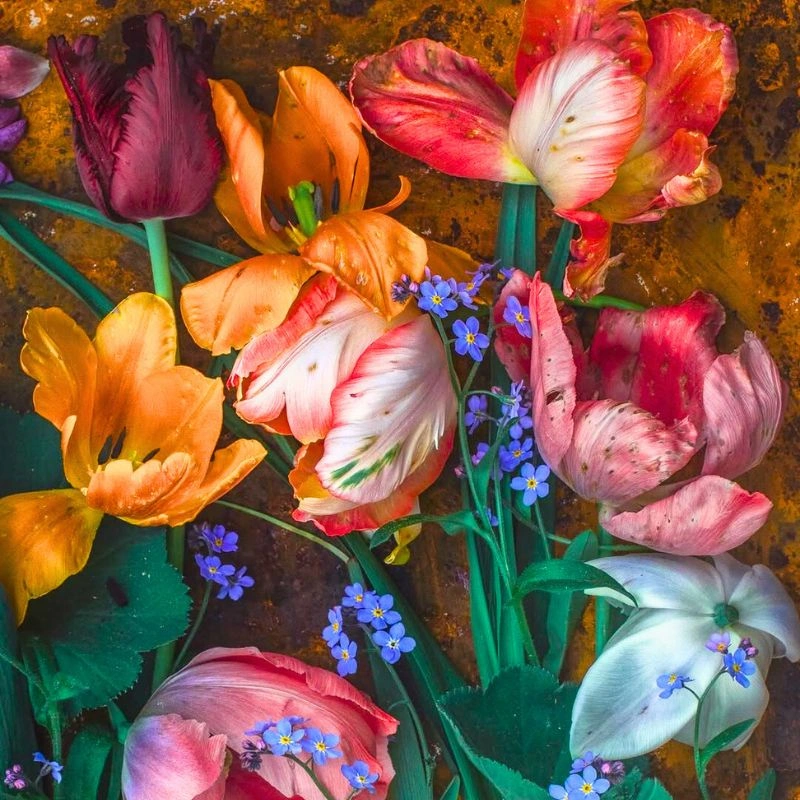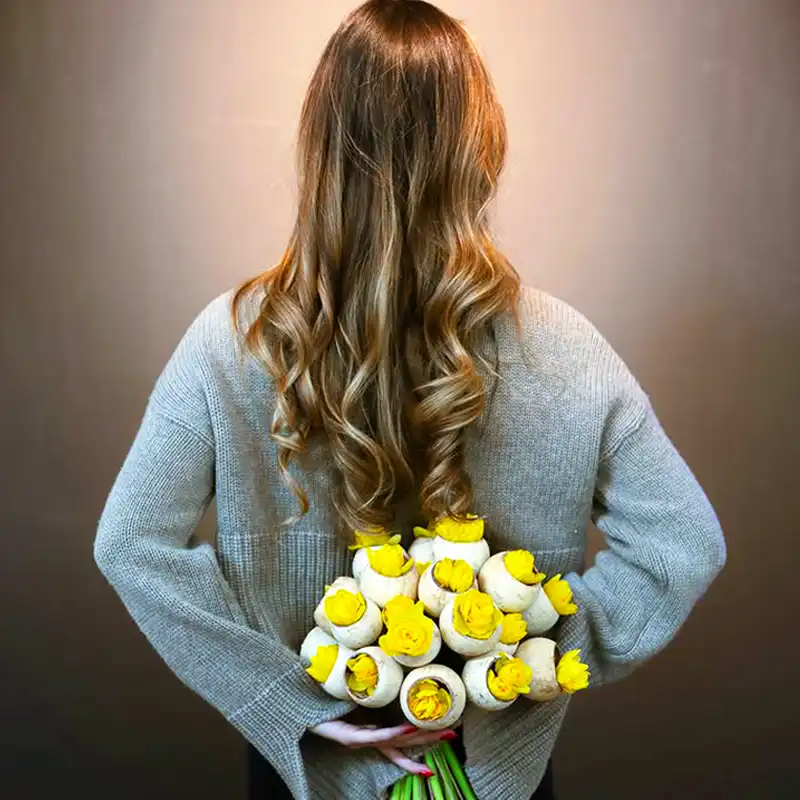Black flowers are quite like magic! And when they appear in a spring garden, it is even more dramatic. Many gardeners and landscapers would say that using black flowers in your garden wouldn't be recommendable since black color in a garden tends to ‘disappear’ too readily into the background - and the same is true for floral design. However, still, many contemporary floral designers love to use these black flowers in their compositions.
Tulips are renowned for their vibrant and diverse colors, but one color that has intrigued the imagination of flower enthusiasts for centuries is black. The allure of black tulips, with their mysterious and dramatic appearance, has led to many questions regarding their existence. Do they even really exist?
Can Black Tulips Truly Exist?
The notion of a truly black tulip, with petals as dark as midnight, is a subject of intrigue and fascination. However, it is important to make it clear that in nature, there are no tulips that possess a true black pigment.
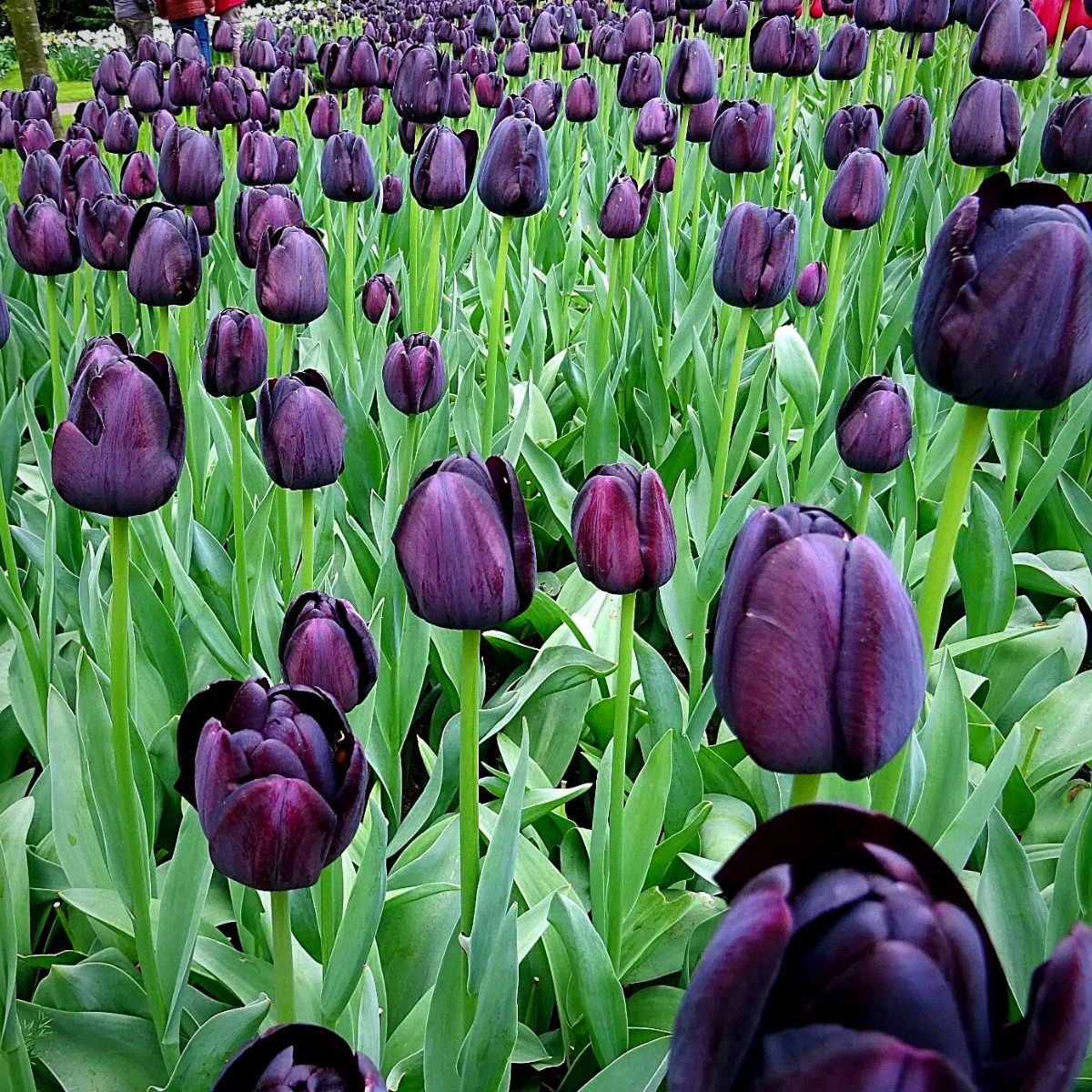
So, essentially, the answer is: "No". Sorry for the spoiler. In truth, no flowers in nature can be completely black - most are deep purples. There just aren't any black pigments in flowers. However, the appearance of black can be created with high concentrations of various darker pigments. The Queen of Night for example is more eggplant in color than it is true black.
Generally, tulip petals are predominantly composed of red, orange, yellow, pink, purple, or white pigments. But hardly truly black.
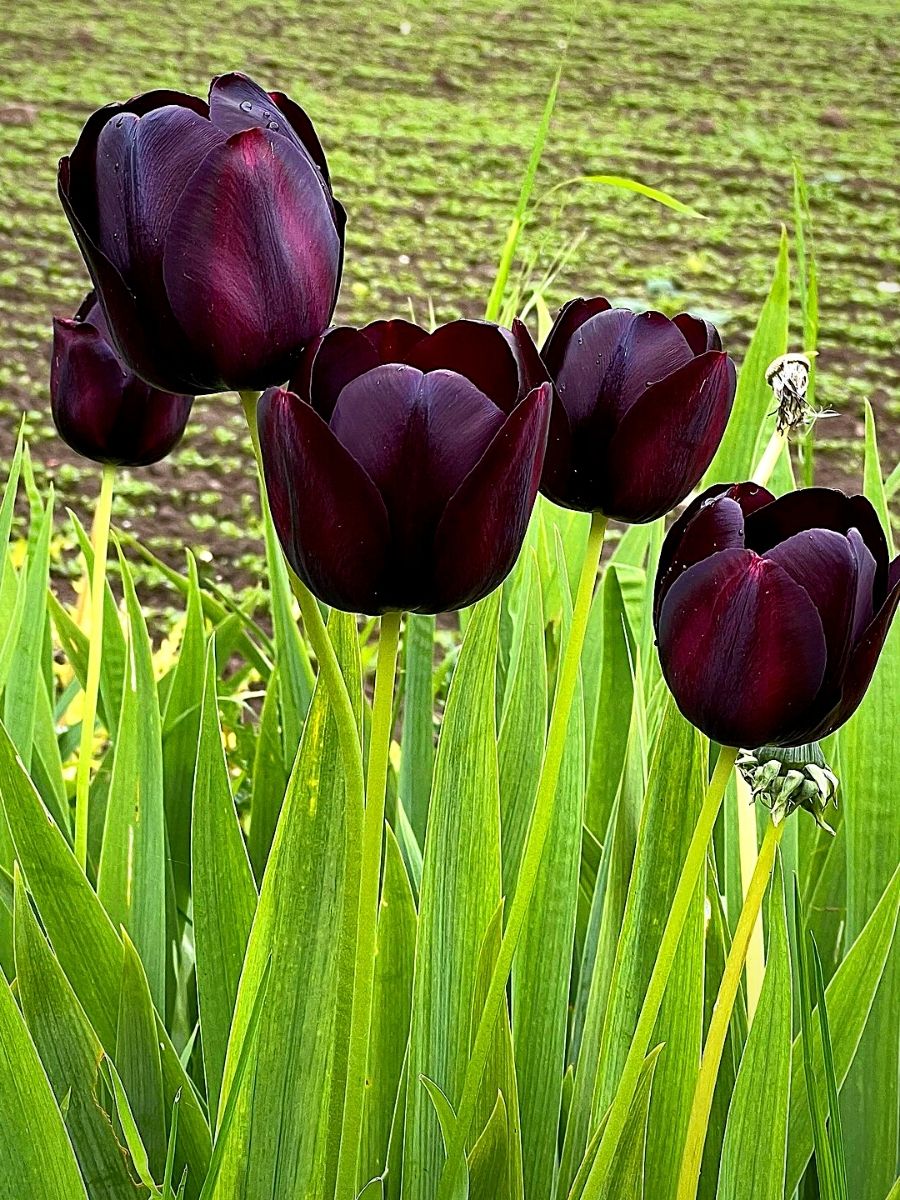
Creation of Black Tulips
While black tulips may not occur naturally, horticulturists and tulip enthusiasts have successfully developed tulip varieties that exhibit deep, dark shades resembling black. This is achieved through a combination of selective breeding, genetic manipulation, and careful cultivation techniques. Here's how.
Selective Breeding
One method used to create black tulips is selective breeding. This is achieved by carefully cross-pollinating tulips with dark-colored petals. Horticulturists can, accordingly, gradually enhance the intensity of the dark pigments in subsequent generations.
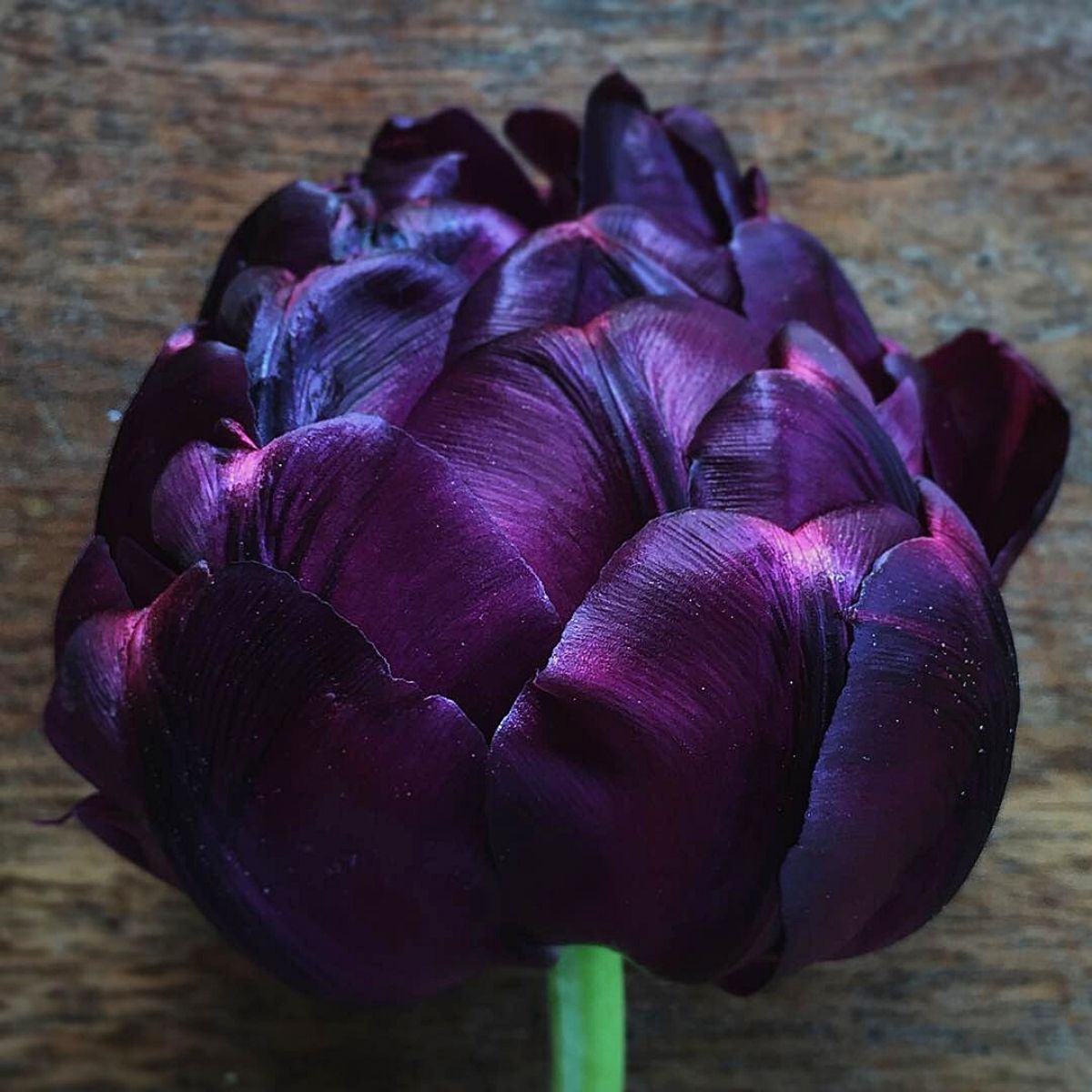
This process involves selecting and propagating tulips with the darkest hues, gradually refining the desired black appearance.
Genetic Manipulation
Advancements in genetic engineering techniques have also contributed to the creation of black tulips. Scientists can introduce genes from other plant species that possess dark pigments into tulip genomes, resulting in tulips with deeper and darker colors.
These genetic modifications allow for greater control over the pigmentation of tulip petals, including the creation of varieties with black-like hues.
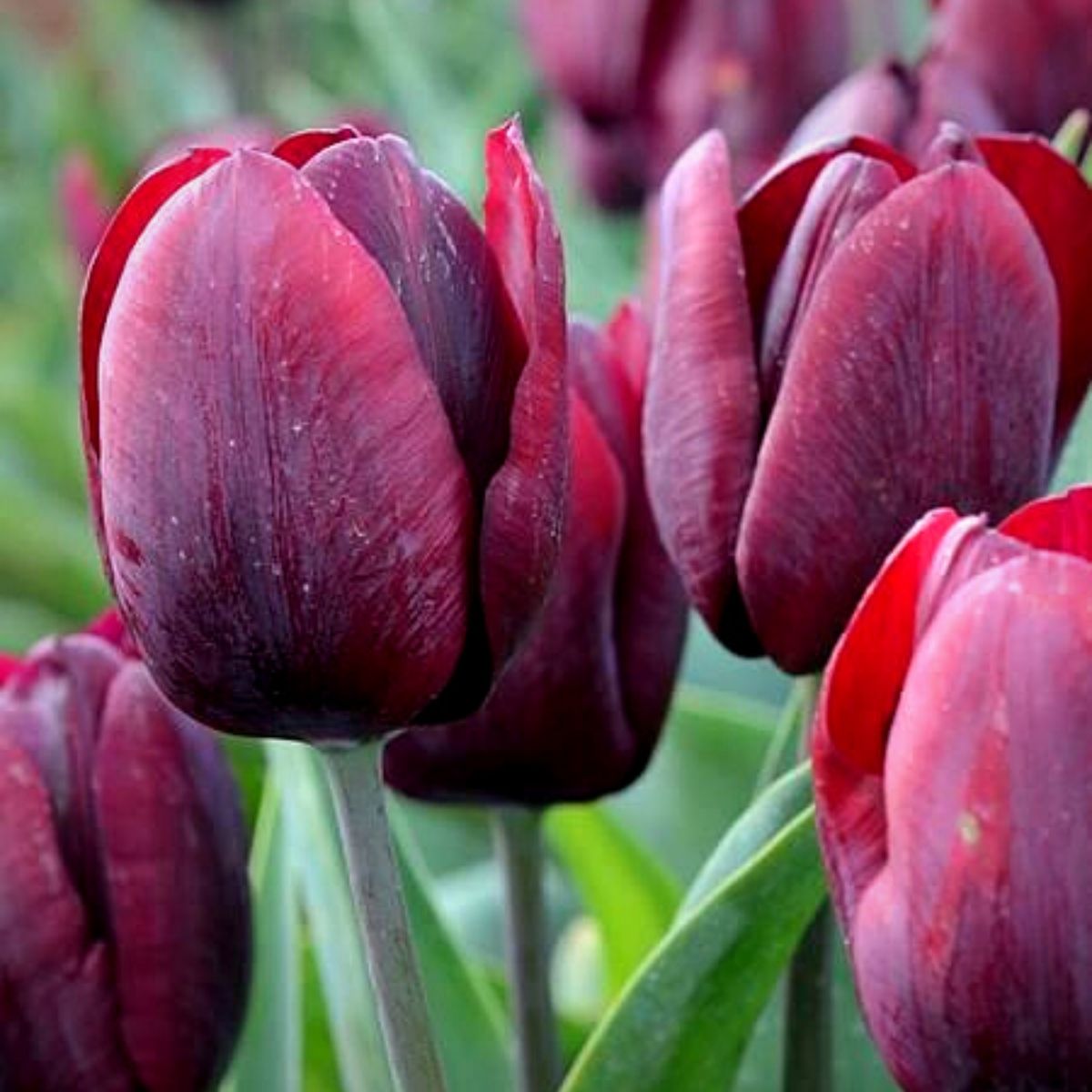
Creating Black Tulips Demystified
Although black tulips are relatively rare (and as said before technically more eggplant-colored than they are true black), there are, nevertheless, fantastic cultivars out there.
Creating any new and durable variety of tulips is considered a triumph in the bulb trade. First, you have to transfer pollen; taking it with a paintbrush from the anther of one tulip and placing it on the ovules of another.
Then the breeder has to decide when the fertilized seeds are ready to plant, and then it takes five years or more for a flower-producing bulb to mature. Tulips are bred not only for color, length, and shape but also for qualities like the firmness of the leaf and disease resistance.
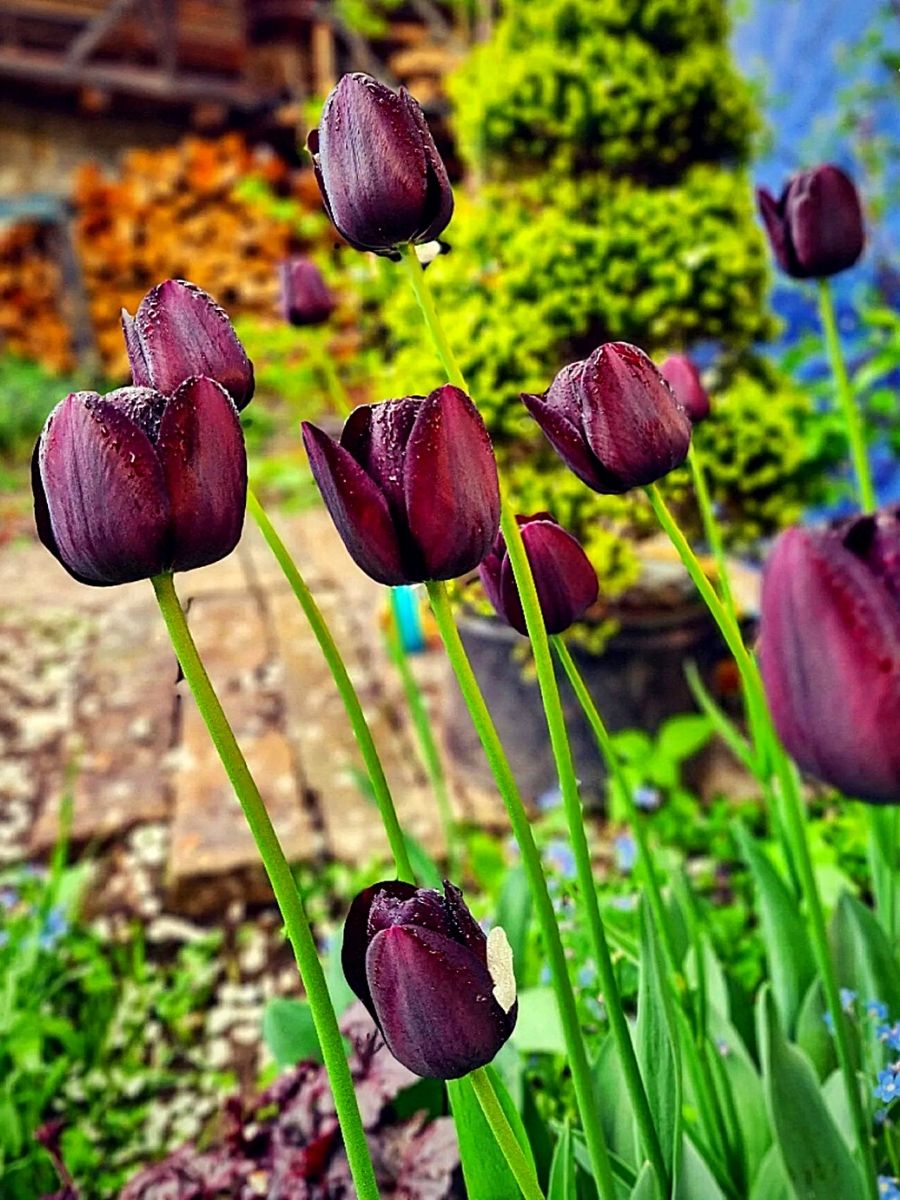
For one thing, tulips do not always abide by Mendel's laws of genetics. Two red tulips can produce offspring in a wide range of colors: yellow, pink, white, striped, and so on. So you understand it is very difficult to breed black varieties.
A Short History of Black Tulips
The oldest and most famous black tulip was La Tulipe Noire, which appeared in 1891 and is no longer in production. TheQueen of Night, which appeared in 1955, is still in production and available. Tulip Queen of Night is very tall and the form of the flower is classic and striking. It is a truly spectacular choice that every tulip enthusiast should try at least once.
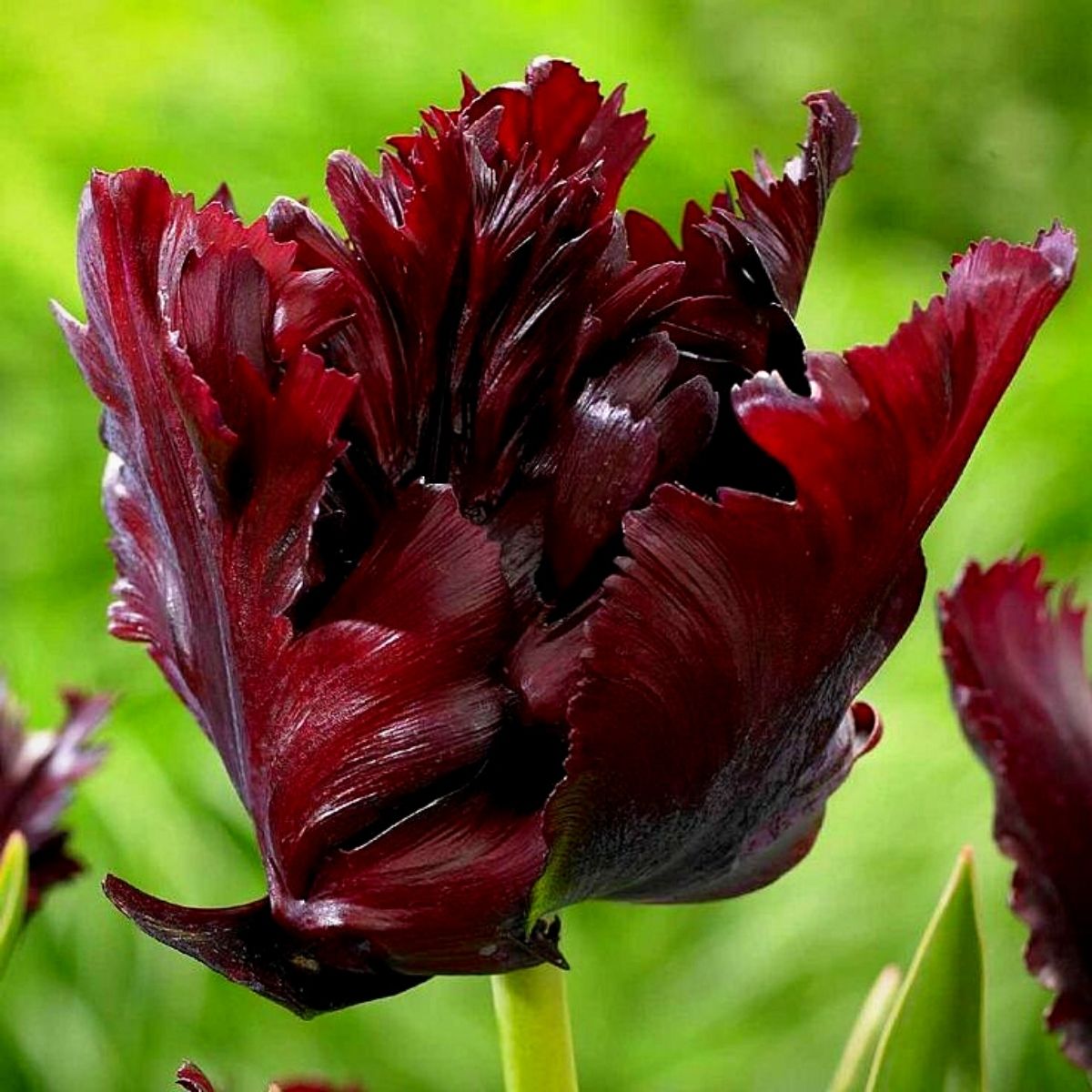
Notable Examples of Black Tulips
Besides the most famous black Tulip Queen of Night, you can find some other varieties of black tulips. Sam van Schooten, a Dutch bulb supplier is also offering the Black Parrot which is shaped with feathery petals, a little lighter in color than the Queen of Night tulips.
A black double tulip called Black Hero is a little darker than the Black Parrot. It’s a deep, purple-black with flashes of wine red. And there's a Vincent van Gogh tulip. Named after one of the most famous Dutch painters, no doubt Vincent would be very proud to be named after such a beautiful tulip variety! It is a black fringed tulip.
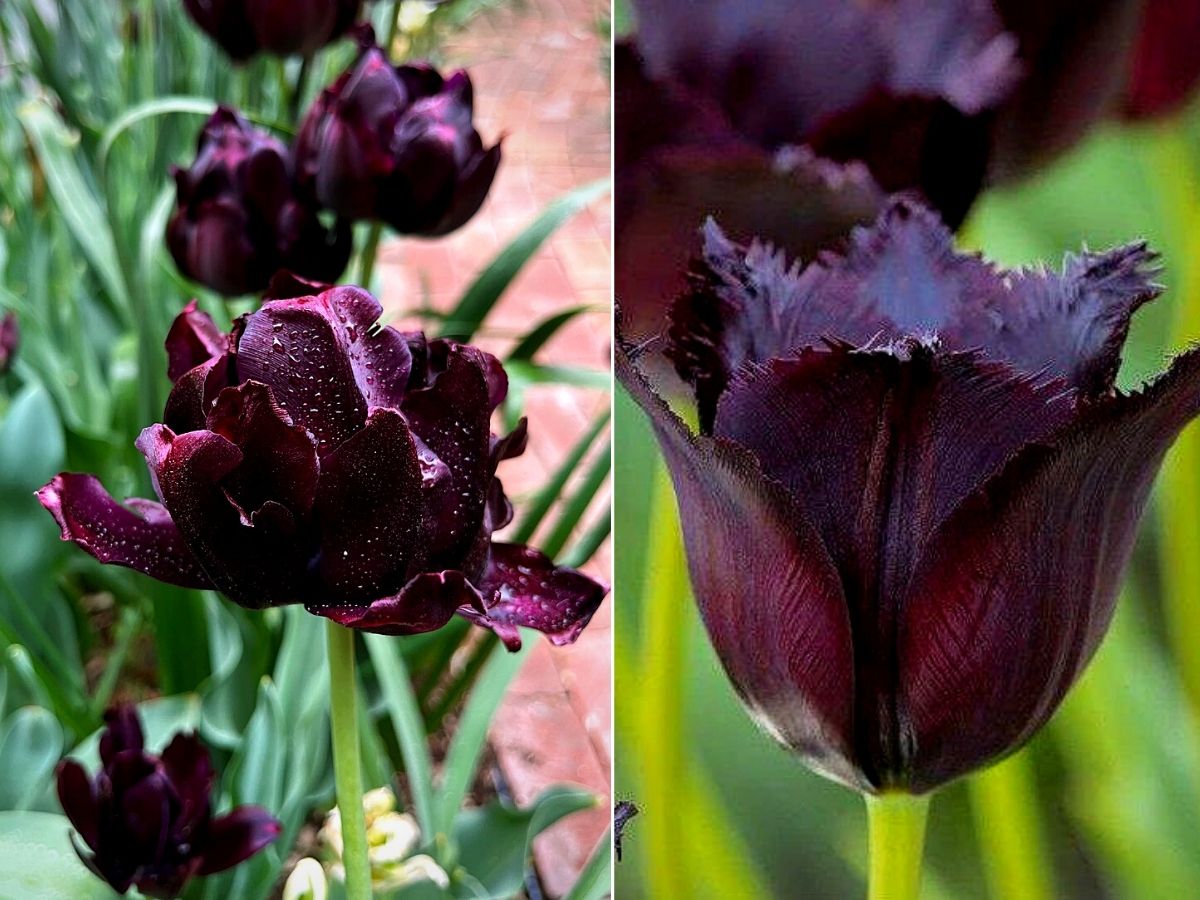
Photos by @jaclynisgardening and @tulpanomania
There is also the Continental tulip, a dark maroon-purple tulip with a dark stem. It grows to a height of 40 cm with the bulb in 11-12 cm size. These tulips require full sun and fertile, well-drained soil for their lush growth and they mainly bloom during April and May.
Notably, depending on the photographer (and paint shop), the flowers are more or less black.
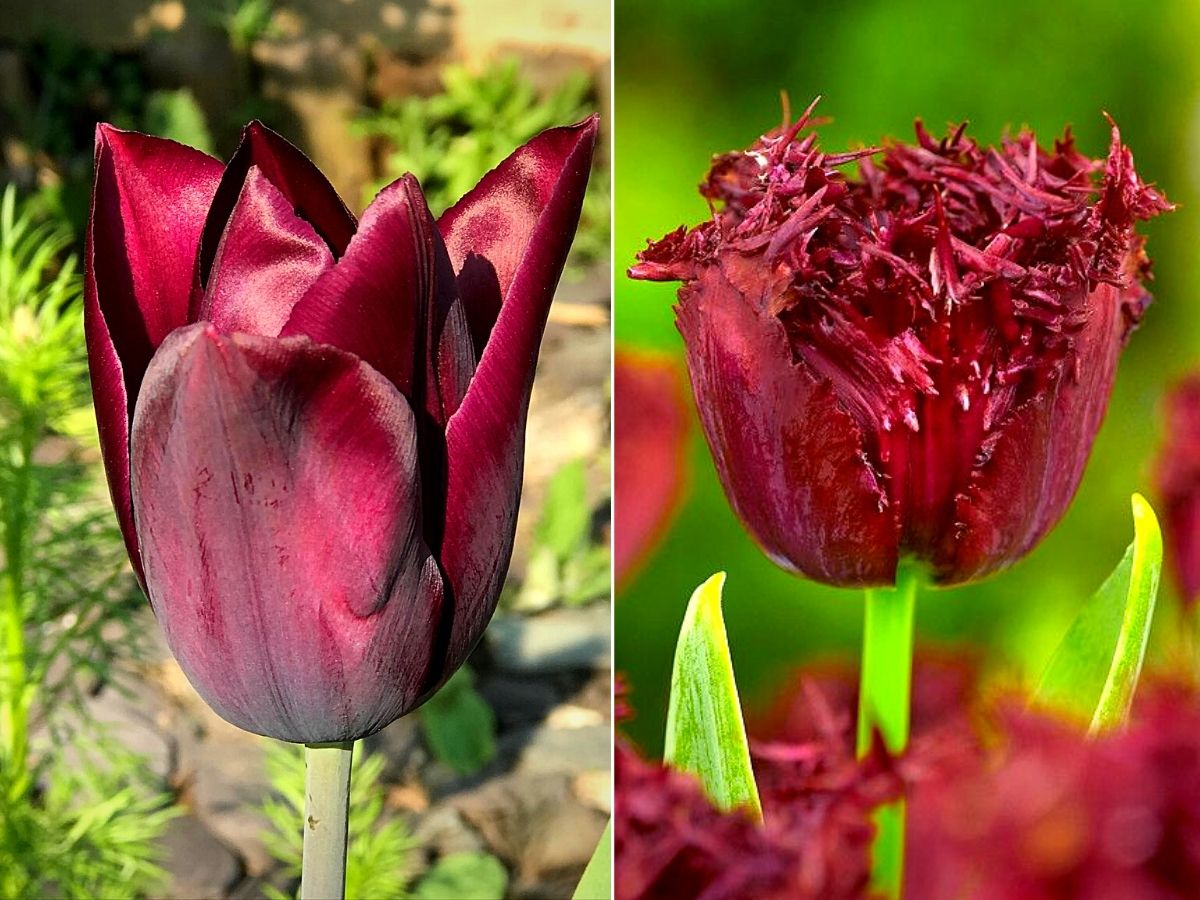
Photos by @sarflondongarden and mijika
Even More (but Lesser) Black Tulips
Tulip Ronaldo is also quite an impressive dark-blooming tulip. In deep carmine-crimson. Tulip Havran is another beautiful, silk-satin almost black tulip with two or three flowers per stem. With deep blackcurrant blooms, it has a similar coloring to the very popular Queen of Night tulip. Tulip Labrador is also a fringed tulip and is reddish-brown to black-colored. It has a very fringed and sturdy flower. The unique shape and color make this variety adorable.
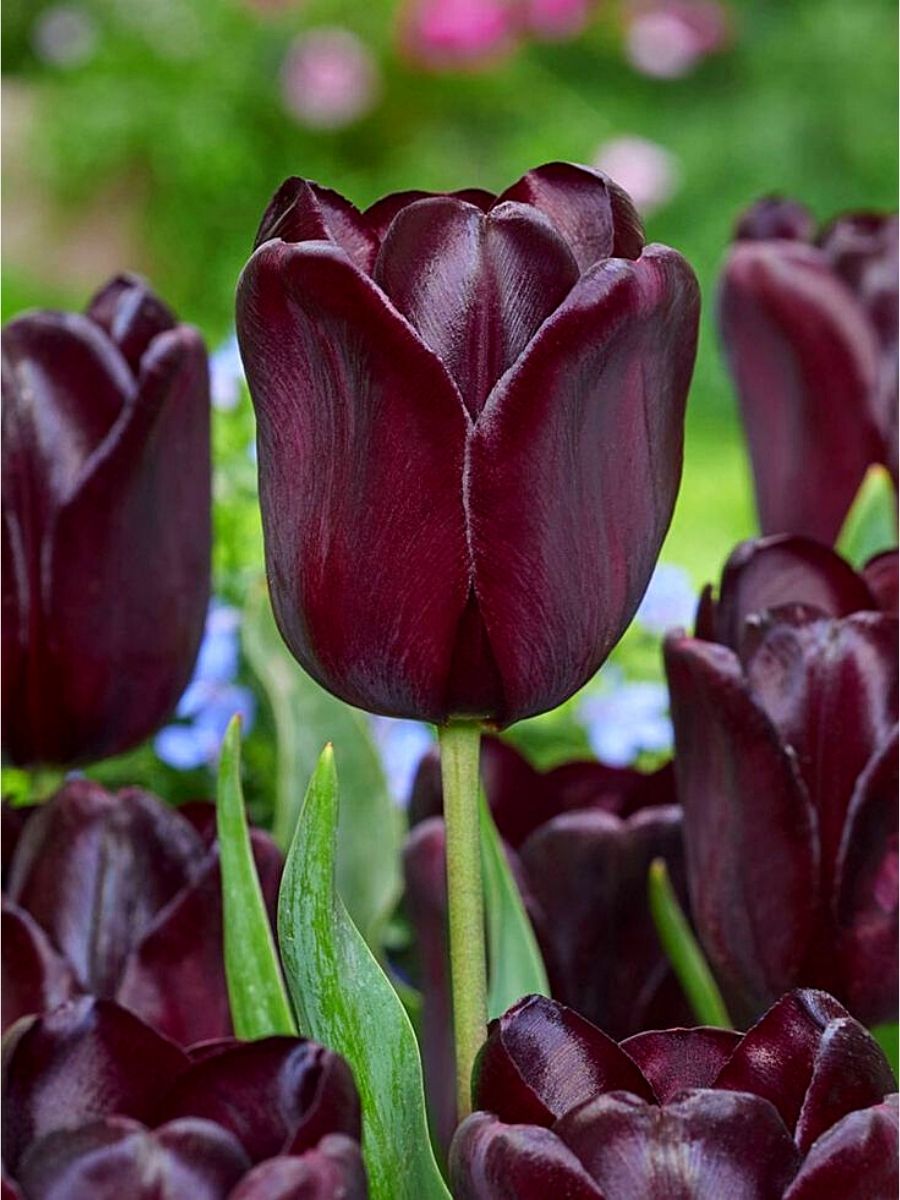
When deploying black tulip flowers in floral compositions, it is worth noting that while black is a really elegant color, it tends to disappear if it is used among too many other colors. Therefore, when combining different colors of tulips to showcase black flowers, pick one other color to get the maximum effect.
Feature image by @sophiedbz, and header image by @tulip_bicycle_tour.

